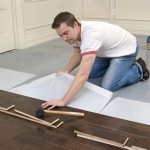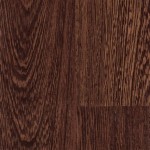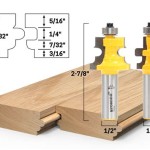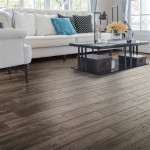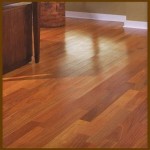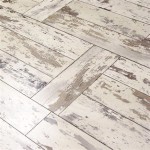Rubber Underlay For Engineered Wood Flooring: An Essential Guide
Engineered wood flooring has become a popular choice for homeowners and businesses alike due to its durability, versatility, and ease of installation. However, to ensure the longevity and performance of your engineered wood flooring, installing a suitable underlay is crucial. Rubber underlay has emerged as an effective and popular underlay option for engineered wood flooring. This article explores the essential aspects of rubber underlay, its benefits, and how it can enhance the performance of your engineered wood flooring.
Rubber underlay is a type of flooring underlayment made from recycled or natural rubber. It provides a layer of cushioning between the subfloor and the engineered wood flooring, offering several benefits that enhance the flooring's performance and longevity.
Benefits of Rubber Underlay for Engineered Wood Flooring
Rubber underlay offers numerous advantages that make it a valuable investment for engineered wood flooring installations:
1. Sound Insulation:
Rubber is an excellent sound insulator, effectively reducing impact and airborne noise. The underlay absorbs sound vibrations, creating a quieter and more comfortable living environment.
2. Thermal Insulation:
Rubber underlay acts as a thermal insulator, reducing heat loss and maintaining a more consistent temperature in the room. This can lead to energy savings and increased comfort.
3. Moisture Resistance:
Rubber is inherently moisture-resistant, protecting the engineered wood flooring from moisture damage caused by spills or humidity. It prevents the growth of mold and mildew, ensuring the flooring's durability.
4. Impact Resistance:
Rubber underlay provides impact resistance, cushioning the floor from heavy foot traffic and preventing surface damage. It helps extend the lifespan of the engineered wood flooring.
5. Leveling Irregularities:
Rubber underlay can help level minor irregularities in the subfloor, creating a smoother and more even base for the engineered wood flooring. This ensures a professional-looking installation.
Types of Rubber Underlay
Rubber underlay comes in various forms, each with its own unique characteristics:
1. Sheet Rubber Underlay:
Sheet rubber underlay is available in large rolls, offering continuous coverage for the flooring. It is easy to install and provides excellent sound insulation and moisture resistance.
2. Tile Rubber Underlay:
Tile rubber underlay is made up of individual tiles that are interlocked or glued together. It is less expensive than sheet rubber underlay and can accommodate irregular subfloors.
3. Waffle Rubber Underlay:
Waffle rubber underlay features a unique waffle-like pattern that enhances its impact resistance and moisture drainage capabilities. It is ideal for areas with heavy foot traffic or moisture concerns.
Choosing and Installing Rubber Underlay
When selecting rubber underlay for your engineered wood flooring, consider the folgenden factors:
1. Thickness:
Rubber underlay typically ranges in thickness from 2mm to 10mm. Choose a thickness that provides adequate sound and impact insulation while meeting the manufacturer's specifications for your engineered wood flooring.
2. Density:
The density of the rubber underlay determines its durability and performance. Opt for a higher-density underlay for increased sound insulation and impact resistance.
3. Compatibility:
Ensure that the rubber underlay you choose is compatible with your engineered wood flooring. Some underlays may require specific installation methods or adhesives.
Installing rubber underlay is a relatively straightforward process. Here are the general steps:
1. Prepare the Subfloor:
Clean and level the subfloor to ensure a smooth and stable surface for the underlay.
2. Roll Out the Underlay:
Roll out the rubber underlay over the subfloor, ensuring it covers the entire surface area.
3. Secure the Underlay:
For sheet rubber underlay, use tape or adhesives to secure it to the subfloor. For tile rubber underlay, interlock or glue the tiles together.
4. Install the Engineered Wood Flooring:
Follow the manufacturer's instructions to install the engineered wood flooring over the rubber underlay.
Conclusion
Installing rubber underlay beneath your engineered wood flooring is a valuable investment that will significantly enhance its performance and longevity. Rubber underlay provides excellent sound and thermal insulation, moisture resistance, impact resistance, and can help level irregularities in the subfloor. By choosing the right rubber underlay and installing it properly, you can ensure a beautiful, durable, and comfortable engineered wood floor for years to come.

Probase Rubber Underlayment For Engineered Hardwood Laminate Flooring Sound Seal

Rubber Underlayment For Impact Sound Control Trademark Soundproofing

Rubber Underlayment Flooring Direct

Qt Recycled Rubber Underlayment Pc Wood Floors

Dekorman 100 Sq Ft 40 X In W 30 3 L 80 Mil 2 Mm T Rubber Underlayment For Engineered Hardwood Floor Gru2160 The Home Depot

Dekorman 100 Sq Ft 40 X In W 30 3 L 80 Mil 2 Mm T Rubber Underlayment For Engineered Hardwood Floor Gru2160 The Home Depot

6mm Pre Cut Floor Underlayment Made From Rubber

Rubber Underlayment For Impact Sound Control Trademark Soundproofing

6mm Pre Cut Floor Underlayment Made From Rubber

Dekorman 100 Sq Ft 40 X In W 30 3 L 80 Mil 2 Mm T Rubber Underlayment For Engineered Hardwood Floor Gru2160 The Home Depot
Related Posts


